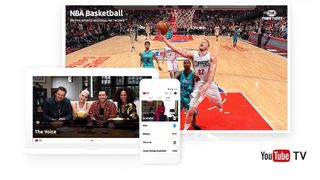New Strategies Are Best Defense Against YouTube TV’s Threat

The recent unveiling of YouTube TV drives home the point that if traditional TV providers aren’t testing new strategies to innovate, they risk rapidly losing ground to emerging competitors. Joining the ranks of other over-the-top services, YouTube TV is just the latest example of a streaming service ramping up competition against incumbent pay TV players.
OTT has already changed the market dramatically, and although many communications services providers (CSPs) are reacting by adjusting pricing and retention strategies to stem the flow of cord-cutters, such strategy shifts may not be enough to remain competitive. Now that streaming is here to stay, many pay TV companies are wondering how to maintain market share, whether by revamping customer retention strategies, launching a streaming service of their own, or taking another approach.
The ability to rapidly try, evaluate and optimize new ideas is critical to responding quickly to OTT competitors. As the industry becomes increasingly competitive, pay TV providers need to adopt a rigorous focus on data and analytics to improve customer retention. Test vs. control analytics are the key to precisely targeting subscribers with the right retention initiatives at the right time.
The When and Why of Churn
Best-in-class organizations use test vs. control analytics to identify the cause of customer churn: which subscribers cancelled for incidental reasons—because, for example, their apartment lease expired—and which ones canceled proactively. Using these insights, leading organizations invest in retention campaigns only in instances where a provider can take action to prevent a subscriber from churning, without wasting resources on consumers who will cancel regardless.
Providers who already offer—or are considering soon launching—their own streaming service will also need to test new ideas. Offering lower-priced OTT services is a risky business; there is a delicate balance between retaining would-be cord-cutters, without encouraging too many subscribers to trade down from more-expensive existing channel bundles.
In addition, CSPs with in-house streaming services should conduct test vs. control analyses to validate and improve their OTT acquisition and retention strategies. As OTT is so new to traditional TV providers and the landscape is changing so quickly, rapid in-market experiments will be essential to refining pricing, advertising and retention. By first trialing various promotions or campaigns with small subsets of the OTT subscriber base, executives can better measure the true financial impact of each effort, targeting them for optimal results.
Broadcasting & Cable Newsletter
The smarter way to stay on top of broadcasting and cable industry. Sign up below
Broadband Opportunity
YouTube TV shouldn’t entirely frighten pay TV executives. Perhaps counterintuitively, it’s also an opportunity for growth. Streaming services heighten customer demand for faster Internet services, which is a need companies can tap into by focusing on upselling faster Internet packages. With this increased customer reliance on high-speed Internet in mind, pay TV companies should test new strategies to upsell these existing offerings and capitalize on the streaming trend.
The balancing act between OTT and traditional pay TV will be challenging to get right. By refining customer retention, pricing and promotions, and the introduction of new offerings and bundles, CSPs will develop the edge they need to remain competitive with the likes of YouTube TV.
Marek Polonski is senior vice president of Applied Predictive Technologies, an Arlington, Va.-based analytics software firm.
